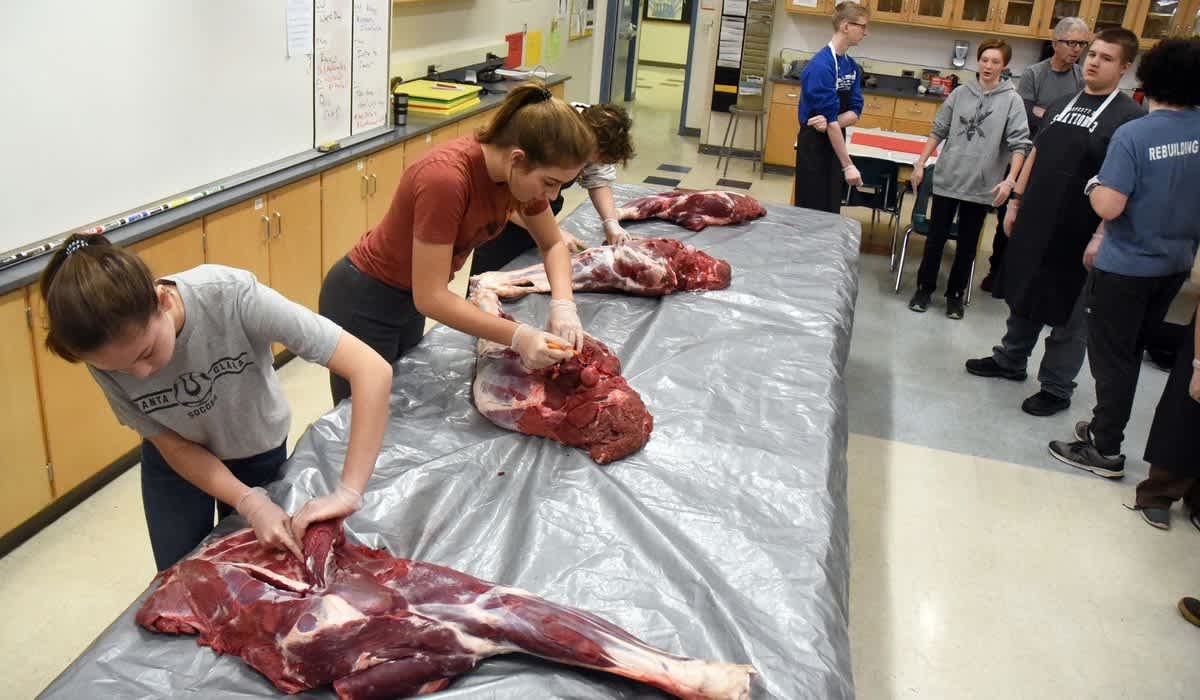Chugiak High School Teacher Brings Moose to Class for a Lesson on Life Skills
OutdoorHub Editor: Keenan Crow 07.23.20

How do high school students in Alaska learn about anatomy? Well, if it were anything like this in my high school, I would have paid a little more attention – and probably got better grades, too!
Under the careful supervision of their teacher, Brian Mason, about 30 Chugiak High School students worked together to de-bone, process and package a cow moose Mason had harvested after receiving a special Cultural Education tag.
The lesson was part of a World Discovery Seminar which focuses on Socratic, in-depth learning and hands on activities to help students become multifaceted thinkers while immersing them in Alaska cultural traditions and teaching them practical life skills, the Anchorage Daily News reports.
“What I try to emphasize — and the World Discovery Seminar program as a whole — is to emphasize experiential learning,” Mason said while his students worked carefully to break down the animal. “You can learn certainly about anatomy from diagrams and textbooks and videos but getting your hands on an animal is a big part of the science aspect of it.”

And while the program encourages these types of unique projects, Mr. Mason’s moose butchering class was a bit off-the-wall even for the WDS program.
Mason explained the extensive steps he had to take in order to obtain a Cultural Educational Harvest Permit from the Alaska Department of Fish and Game, which allows an individual to harvest game animals for educational purposes.
According to ADN, Tim Spivey with the Alaska Department of Fish and Game said only about 30-40 aforementioned permits are issued each year, mostly to schools and villages. A majority are for moose, though a few are for caribou or deer; black bears, fur bearers and even mountain goats can be harvested, but Spivey said there’s an extremely strict protocol one has to follow in order to receive one.
“We don’t just issue these Cultural Education Permits to anyone,” he said.
Applicants must first fill out an application online and propose a detailed program that can teach students aspects of traditional Alaska practical knowledge and values. Also, any harvest cannot result in a significant reduction in populations or take away opportunities from other hunters, so biologists have to get involved to determine if harvest was possible for the specific area you’re hunting.
In addition, certain limits were placed on the type of moose Mason could shoot. For instance, it had to be a cow and could not be with a calf. After killing the moose, Mason was then required to submit a report detailing the age, sex, specific harvest location and who shot the moose. Spivey said Mason will also be required to file another report 30 days after the hunt highlighting the educational or cultural program activities that took place and other pertinent details or problems encountered.
Of course, there was some concern about how his students would react to the lesson, but overall Mason said his students did an outstanding job.
“They’re all being super safe and responsible and frankly they’re really engaged,” he said. “I wasn’t sure how some students would really deal with the process of getting their hands on a dead animal, that can be an off-putting experience for some students, but I’ve been really impressed with them.”
In the end, the students processed roughly 200 pounds of moose meat, and were even able to bring some home for dinner. Now that’s my kind of homework!

